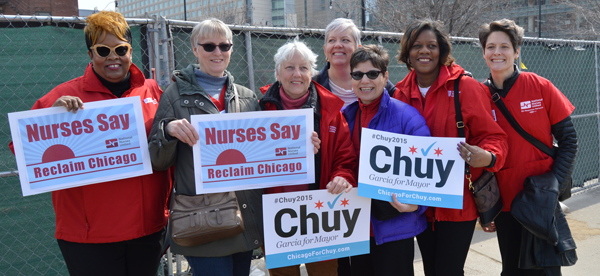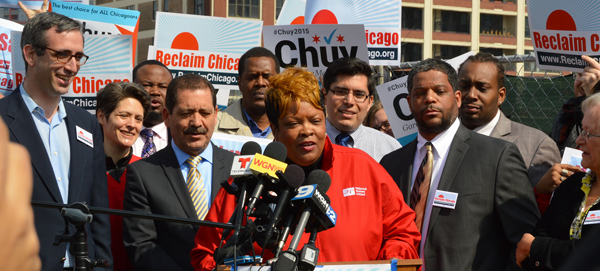“Change does not roll in on the wheels of inevitability, but comes through continuous struggle.” – Dr. Martin Luther King, Jr.
“We believe that it is going to be the nurses, the RNs, who will lead the change in healthcare.” – Kay McVay, RN, President Emeritus, California Nurses Association
Year 15 of the new millennium opened with a most momentous achievement for registered nurses and patients – a precedent-setting agreement in the largest RN contract in the nation, for 18,000 Kaiser Permanente RNs and NPs that will likely raise the bar for nurses from coast to coast.
The new pact could not have been realized without the unified determination of Kaiser nurses, with the broad support of other RNs and our unparalleled organization, to defend the role of nurses and their professional expertise as patient advocates.
Their unity and devotion to assuring the highest level of quality care for patients as well as protections for the nurses who deliver that care produced a historic agreement that will result in hundreds of additional RNs providing care for patients, not just in the clinics and home, but in the hospitals as well with a significant impact on the quality of care.
It means an agreement that features landmark new security for nurses on the job, with supplemental insurance, for RNs exposed to workplace violence, deadly infectious diseases such as Ebola, and needle-stick injuries. And it includes a significant, well-earned, pay increase, stricter limits on travelers, and maintenance of the critical pension plan for nurses to look forward to be able to retire with dignity and in health.
Yet, the new pact cannot be understood just in the months of rallies, marches, and struggles by Kaiser RNs. It is also a reminder of the traditions and efforts of Kaiser RNs like Kay McVay and CNA over many years, and a historical memory lodged in the offices of Kaiser and other hospital executives as well as our nurses.
“If you want to understand today, you have to search yesterday,” wrote Pearl Buck, or, in the words of Oscar Wilde, “Memory is the diary we all carry about with us.”
Kaiser RNs have long been in the forefront of standing up for their patients and themselves, setting a benchmark that others have followed.
To understand the victory of Kaiser nurses today, a good place to start is the 14-month fight with a more entrenched Kaiser management of the 1990s that sought to push through multiple contract reduction demands and refused to respond to RN concerns about patient care standards.
The Kaiser RNs well understood that their response would rebound through other hospitals. As Kaiser RN Zenei Cortez, now a CNA-co-president, noted later, “We needed to fight not only for all the Kaiser nurses, but for all the RNs in the United States.”
And fight they did, with six short-term, unified, strikes, with a vision that the nurses and their organization would not allow the role of the registered nurse to be compromised.
Throughout the battle, nurses had to withstand a unified healthcare industry, their union partners who signed the infamous labor-management partnership on the day of the first strike, and an often-hostile press.
But we had a significant ally, as Kaiser RN, now CNA and NNU co-president Deborah Burger noted afterward. “The strikes galvanized not only the nurses, but the public and the patients. Each time we came back, there was even more support.”
Through that long fight, Kaiser and the hospital industry as a whole learned a valuable lesson. The Kaiser RNs, and the leadership and staff of the organization, would not break.
It ended with a stellar attainment, as the New York Times noted in a national article headlined, “Nurses Get New Role in Patient Protection. Pact with Biggest H.M.O. Allows Care Givers to Guard Standards.”
A key component was the establishment of an unprecedented provision in which Kaiser agreed to the establishment of 18 quality liaisons, selected by the nurses themselves, to meet with management to address and resolve patient care concerns, as well as protection of the RNs’ contract standards achieved over years of effort.
As Robert Kuttner wrote in the Boston Globe at the time, “Unions do best, not just as self-interested workers with their hands out but as a broader social conscience on behalf of vulnerable people. Indeed, if labor fails to play this role, it is just another interest group, and it loses public support.”
That is the legacy that is a foundation of our latest achievement with Kaiser and our continued success in fighting for all nurses, patients, and the public interest. It is a legacy, and model, our organization will never forget.
 NO To Trans Pacific Partnership!
NO To Trans Pacific Partnership! 














